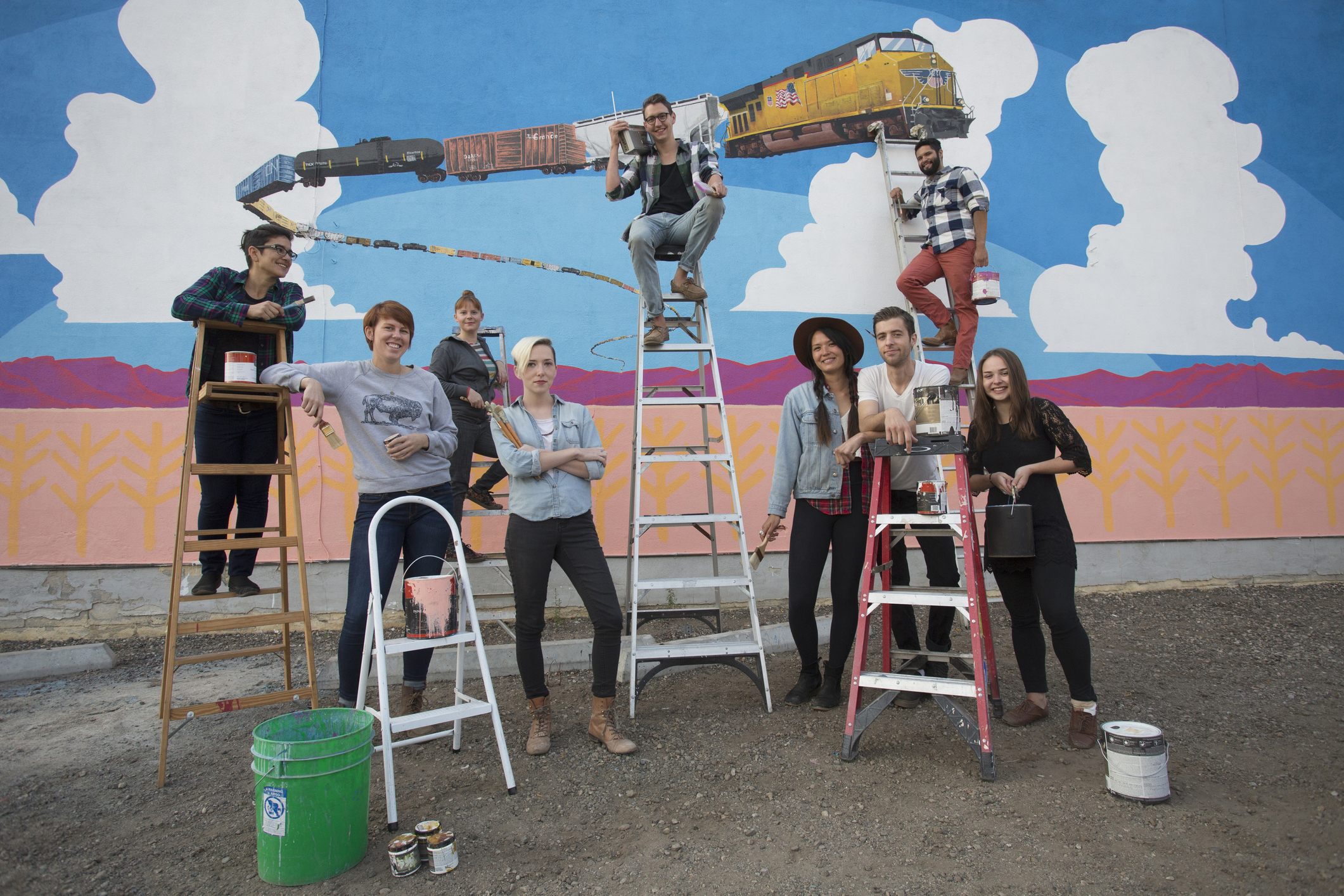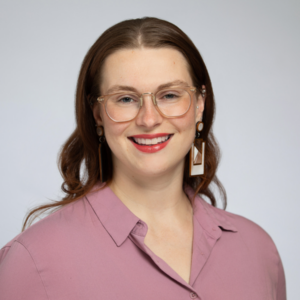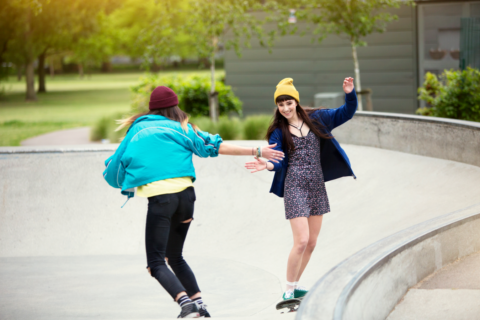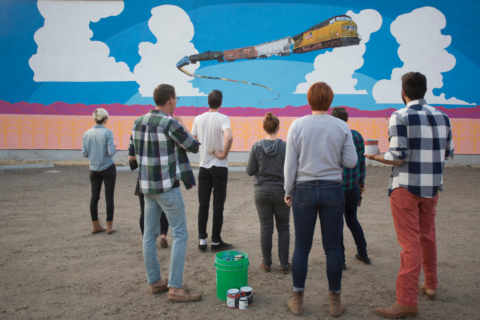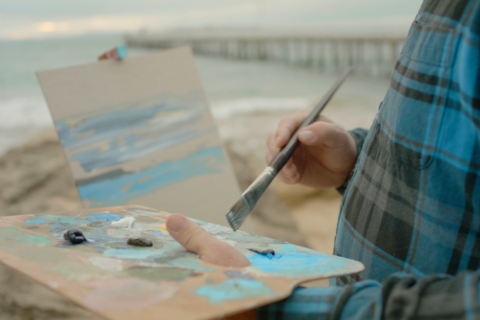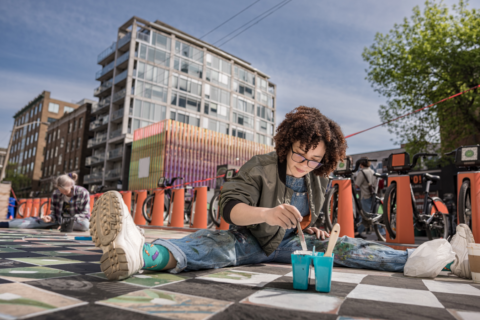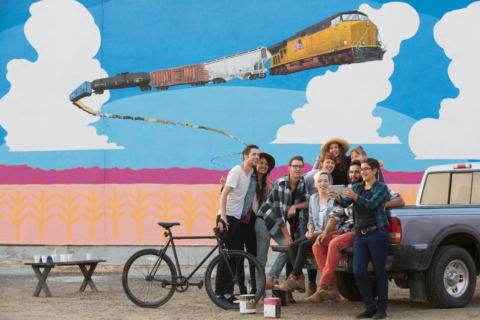Cities are no strangers to supporting arts and culture. But cities should consider deeper (and not necessarily more expensive) levels of partnership with artists to support all areas of their governance. Partnering with artists can help local government achieve common and ongoing goals that often feel elusive. Cities have partnered with artists to build and strengthen community relationships, boost social infrastructure, improve community health and wellbeing, communicate creatively, celebrate city identity, and access diverse funding streams. Here are five examples of how leveraging the strengths of artists in your city can improve municipal processes and relationships.
1. Visible, early, tangible wins
City processes take time. This common tension between government bureaucracy and community needs shapes public views of how responsive your local government is to local issues. Partnering with an artist to make visible the drawn-out work of government processes can lead to greater trust.
Picture this:
During a delayed land development project, the Health Department’s Public Safety team and the Office of Planning pool resources to employ an artist to install a temporary activation on the vacant land. The activation shows that the City is paying attention to the property, can improve public safety in the area, and creates a new gathering place that has the potential to decrease social isolation.
City Resource: The Lighter, Quicker, Cheaper method, Project for Public Spaces.
2. Creative Problem Solving
A growing number of cities have found that embedding artists within local government departments can lead to creative and cost-effective solutions to problems. This artist-in-residence-in-government model can apply to any issue area and be implemented at various budget levels.
Picture this:
The Department of Transportation wants to make sure that city transit is effectively serving residents with disabilities. Instead of hiring a consultant for an internal analysis, the DoT partners with the local Arts Agency to hire an artist in residence with lived experience with disability. The artist in residence engages the local disabled community through their artistic process and uses their artistic practice to document stories and represent data. The artist is empowered to make official policy recommendations to the head of the department. The artwork is shared with the public through a DoT campaign.
City Example: Creative CityMaking program in Minneapolis, MN.
3. Meaningful, authentic community engagement
Artists can design creative ways to interact and gather feedback from community members. These processes can improve communication between constituents and government and help residents feel more involved in local decision-making.
Picture this:
The City Council has allocated funds for a new recreation center, and there is debate about which neighborhood would be best served by this resource. The Department of Parks, Recreation, and Culture releases a public call for artist facilitators to conduct a community-led planning process for the building.
City Example: BUILT, a public board game and theater performance.
4. Effective communication
Data is only effective if people can understand what it is saying. Employ an artist to bring the results of a public survey, report, or data set to life and increase public understanding of the implications. Or, employ an artist to draw attention to stories that aren’t being told.
Picture this:
The City is evaluating locations for a new homeless shelter. A city survey and community polling efforts revealed that the majority of residents in Neighborhood X are in favor of having the shelter in their neighborhood, despite a vocal community group expressing their opposition. The Department of Health and the Department of Community Development commission a local theater company to develop a short play based on the results of the community survey data, and the play is premiered in the public amphitheater.
City Example: Data focused – Dismantle Anti-Black Racism Project.
City Example: Stories – The Neighborhoods and Detroit’s Chief Storyteller.
5. Increase belonging
Healthy cities are places where residents feel they belong. As the Cultural Affairs Manager of the City of Oakland says, arts and culture can “operationalize belonging.”
Picture this:
The City is concerned by the number of local seniors who live alone and are experiencing social isolation. Members of the city council build relationships between the county Department of Aging and a local arts organization. The three entities partner to hold community arts events for seniors, with the City contributing funds from a federal transportation grant to run a ride service to the events.
City Example: Rural Mental Health in Rhinelander, WI.
City Example: Restorative Arts in Nashville, TN.
Grow the Arts in Your Community
There is no limit to the creativity you can bring to local government partnerships! Connect with NLC’s arts experts to explore possibilities for your city.
